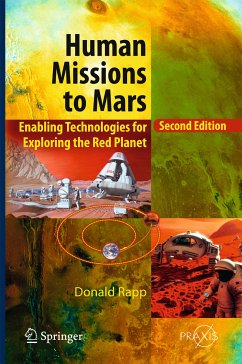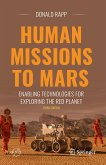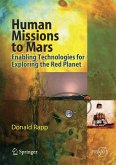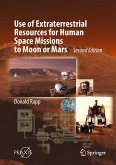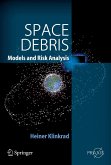As in the first edition, Donald Rapp looks at human missions to Mars from an engineering perspective. He divides each mission into a number of stages: Earth's surface to low-Earth orbit (LEO); departing from LEO toward Mars; Mars orbit insertion and entry, descent and landing; ascent from Mars; trans-Earth injection from Mars orbit; and Earth return. For each segment, he analyzes requirements for candidate technologies. In this connection, he discusses the status and potential of a wide range of elements critical to a human Mars mission, including life support consumables, radiation effects and shielding, microgravity effects, abort options and mission safety, possible habitats on the Martian surface and aero-assisted orbit entry descent and landing. For any human mission to the Red Planet the possible utilization of any resources indigenous to Mars would be of great value; such possibilities are discussed at length. He also discusses the relationship of lunar exploration to Mars exploration.
Detailed appendices describe the availability of solar energy on the Moon and Mars, and the potential for utilizing indigenous water on Mars.The second edition provides extensive updating and additions to the first edition, including many new figures and tables, and more than 70 new references, as of 2015.
Dieser Download kann aus rechtlichen Gründen nur mit Rechnungsadresse in A, B, BG, CY, CZ, D, DK, EW, E, FIN, F, GR, HR, H, IRL, I, LT, L, LR, M, NL, PL, P, R, S, SLO, SK ausgeliefert werden.
"A skeptic's view on the realities of sending a human mission to Mars in the 21st century. ... Human Missions to Mars is hardbound, and Rapp's use of supporting formula, graphs, and technical illustrations ... make it clear that this volume is meant to be used as a reference book in research institutions, technical libraries, and scientific organizations. However, Rapp's engaging writing style and pragmatic view on this subject also makes it an interesting read for the armchair Mars explorer ... ." (Anthony Young, The Space Review, March, 2008)
"This book looks at human missions to Mars from an engineering perspective. ... The book includes appendices describing the use of solar energy on the Moon and on Mars and the value of indigenous water on Mars. This book was written for space scientists and engineers, intermediate-level undergraduates, and postgraduate researchers studying every aspect of human missions to Mars." (The Lunar and Planetary Information Bulletin, 2008)
"Rapp's book is a very readable, critical view of possible explorations of Mars. ... The book discusses in detail the many technologies that must be developed and demonstrated before a successful human mission to Mars can occur. ... The appendixes give significant details about solar energy and water on Earth's moon and Mars. The work is an excellent analysis of the difficulties posed by a human mission to mars. ... Summing Up: Recommended. Upper-division undergraduate through professional collections." (D. B. Mason, CHOICE, Vol. 45 (9), 2008)
"In this book, Donald Rapp ... sets out to provide a critical assessment of the requirements for human missions to Mars from an engineering perspective. ... I found it informative because I learned a lot about the intricacies of Mars mission architectures and the inherent engineering challenges. ... it is refreshing to read a detailed and independent study by someone who has no vestedinterest in any 'official' plans for human space missions." (Ian Crawford, Eos, Vol. 89 (36), 2008)

